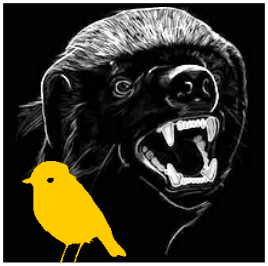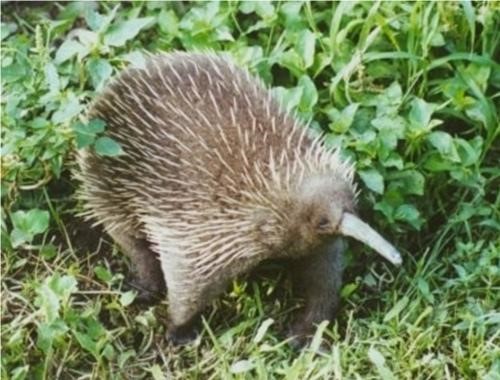Monotremes or bats had a head start over even the most mammal-like of birds in filling empty niches on stray fragments of Gondwana.

Prof. Mumblebard claims: “No terrestrial mammal could reach New Zealand owing to geographical isolation. In their place, kiwi evolved into somewhat mammal-like forms as shown by the many odd features of these birds, including: relatively low body temperature, slow growth, simplified feathers, small eyes, nostrils at the tip of the beak, dual functional ovaries, reduction of air sacs, and legs powerful enough to excavate tunnels. Genetic constraints naturally precluded the full conversion of bird into mammal, but the evolutionary convergence of kiwi with mammals proves that the lack of native mammals in New Zealand was owing to the remoteness of these islands.”
Robin and the Honey Badger respond: “It’s misleading to assume that mammals lacked access to New Zealand and that kiwi have evolved convergently with mammals in their combination of features. There are two reasons why the exaggerated isolation of New Zealand does not explain its paucity of native mammals. Firstly, monotremes would have been present in Zealandia, the mini-continental precursor to these islands, at the time of its split from Gondwana. Secondly, bats would have reached Zealandia and New Zealand for tens of millions of years. The fact that several features of kiwi are vaguely mammal-like is less relevant than the presence of these features in monotremes and bats in the first place. The monotremes on the comparable islands of New Guinea, for example, have hair, small eyes, a long ‘beak’ with nostrils at the tip, and stout limbs capable of powerful excavation. Kiwi are therefore monotreme-like rather than mammal-like, which accentuates the question of why monotremes failed in New Zealand. For their part, bats share the following features with kiwi: nocturnal activity, small eyes, dependence on hearing and olfaction, and tendency to shelter in tunnels. Although no bat is known to have become flightless on any island worldwide , the evolutionary conversion of ancestral bats to fully terrestrial mammals need not take longer than the conversion of flying birds to kiwi. So monotremes or bats would logically have had a head start in evolving along similar lines to kiwi. Contrary to popular belief, the nature of kiwi therefore fails to solve the puzzle of the absence of native terrestrial mammals in New Zealand. Instead, it makes this absence all the more puzzling.”

Please join us here at the Bio-edge with your own comments. In the discussion below we encourage links to any evidence supporting either Prof. Mumblebard or Robin and the Honey Badger. Illustrations are welcome but please cite all sources or we may be forced under copyright to delete your comment.
Kiwi were no solution to a mammalian vacuum

